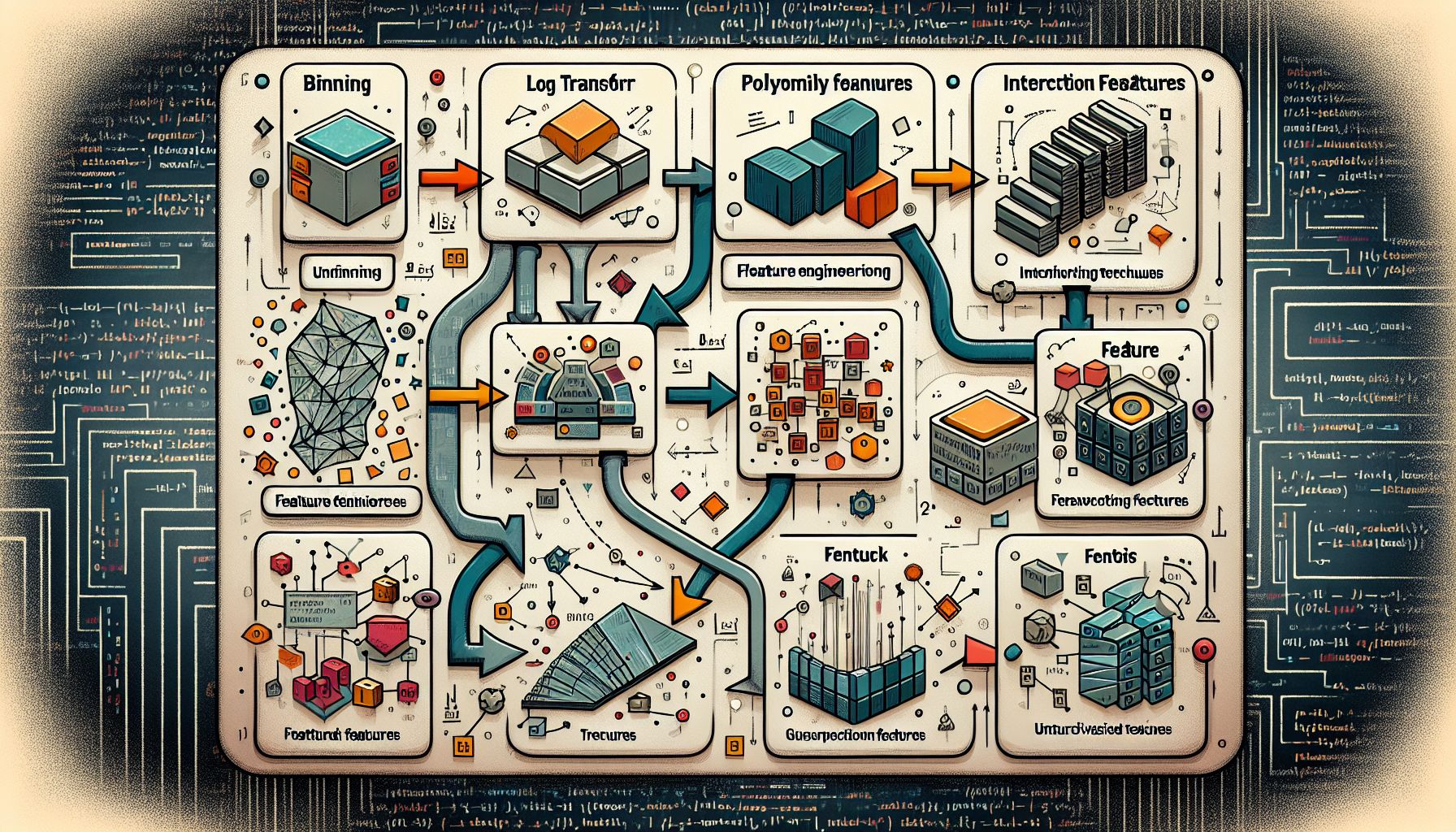⚡ “Unleash the true power of unsupervised learning by mastering the art of feature engineering. Discover how these innovative techniques can be the game-changer in your machine learning endeavors!”
Hello fellow data enthusiasts! Today we’re diving head-first into the marvelous world of feature engineering in unsupervised learning. Feature engineering, as some of you may know, is the process of transforming raw data into features that better represent the underlying problem to the predictive models, resulting in improved model accuracy on unseen data.🎯 On the other hand, unsupervised learning is a type of machine learning that looks for previously undetected patterns in a data set with no pre-existing labels and with a minimum of human supervision. The combination of these two, feature engineering and unsupervised learning, is like a magical potion that can unlock new levels of data insights.💫 So, without any further ado, let’s begin our journey into the deep trenches of this wonderland!
1️⃣ Understanding the Importance of Feature Engineering 📖

"Unlocking Patterns: The Art of Unsupervised Learning"
Feature engineering, in essence, is the soul of machine learning. Without the right set of features, even the most sophisticated machine learning models may perform poorly. Imagine trying to bake a cake with the wrong set of ingredients. No matter how exceptional your baking skills are, the cake will likely not turn out as expected. Similarly, the features you choose for your machine learning model will significantly impact its performance. In unsupervised learning, where the algorithms need to make sense of data without any predefined labels, feature engineering becomes even more crucial. The right set of features can help the algorithms uncover hidden patterns, identify clusters, and even detect outliers.📈
2️⃣ Popular Techniques for Feature Engineering in Unsupervised Learning 🧰
Now that we understand the importance of feature engineering let’s delve into some of the most popular techniques used in unsupervised learning.
Principal Component Analysis (PCA) 🧩
PCA is a dimensionality reduction method that is often used to reduce the complexity of data and improve algorithm efficiency. It’s like packing a suitcase for a trip – you want to bring everything you need but have limited space, so you need to choose wisely. PCA helps you pack the most important information into fewer features, making it easier for your algorithms to process the data.
Autoencoders 💻
As for Autoencoders, they’re a type of artificial neural network that can recreate the input data after reducing it to a lower-dimensional representation. As for They, they’re like an artist who observes a landscape, compresses all the details into a mental image, and then recreates the scenery on canvas. Autoencoders can be very effective for feature extraction in unsupervised learning.
Clustering-Based Feature Engineering 📊
Clustering algorithms like K-means and DBSCAN can be used to engineer new features. These features can be the distance of a data point to the cluster centers, the density of the cluster, or even whether a data point is considered an outlier. These features can provide valuable insights when you’re dealing with unlabelled data.
t-Distributed Stochastic Neighbor Embedding (t-SNE) 🎯
t-SNE is another dimensionality reduction technique that is particularly good at visualizing high-dimensional data. It’s like a tour guide who helps you explore a complex city by simplifying and explaining the key landmarks. t-SNE can help you visualize clusters in your data, which can be very helpful in feature engineering.
3️⃣ Practical Tips for Effective Feature Engineering 🛠️
Now that we’re acquainted with the tools, let’s look at some tips to make the most of feature engineering in unsupervised learning. * Conceptualize your data: Before diving into feature engineering, take some time to understand your data. Plot your data, calculate basic statistics, and try to understand the relationships between different features. * Don’t underestimate the simple methods: While complex methods like autoencoders can be powerful, don’t overlook simple techniques like PCA or even manual feature creation based on domain knowledge. * Experiment and iterate: Feature engineering is more of an art than a science. Don’t be afraid to experiment with different methods and iterate on your features. * Validate your features: Always validate your new features using appropriate metrics or visualization techniques. You want to ensure that your new features are indeed improving your model’s performance.
🧭 Conclusion
And there we have it, folks! We’ve embarked on a fantastic journey through the land of feature engineering in unsupervised learning. From understanding its importance to exploring popular techniques and practical tips, we’ve covered a lot of ground. Remember, feature engineering is a creative process, and there’s no one-size-fits-all solution. It’s about understanding your data and using the tools at your disposal to extract meaningful features that will help your algorithms make sense of the data. So, go forth and engineer those features! Happy data wrangling! 🎉
The future is unfolding — don’t miss what’s next! 📡
